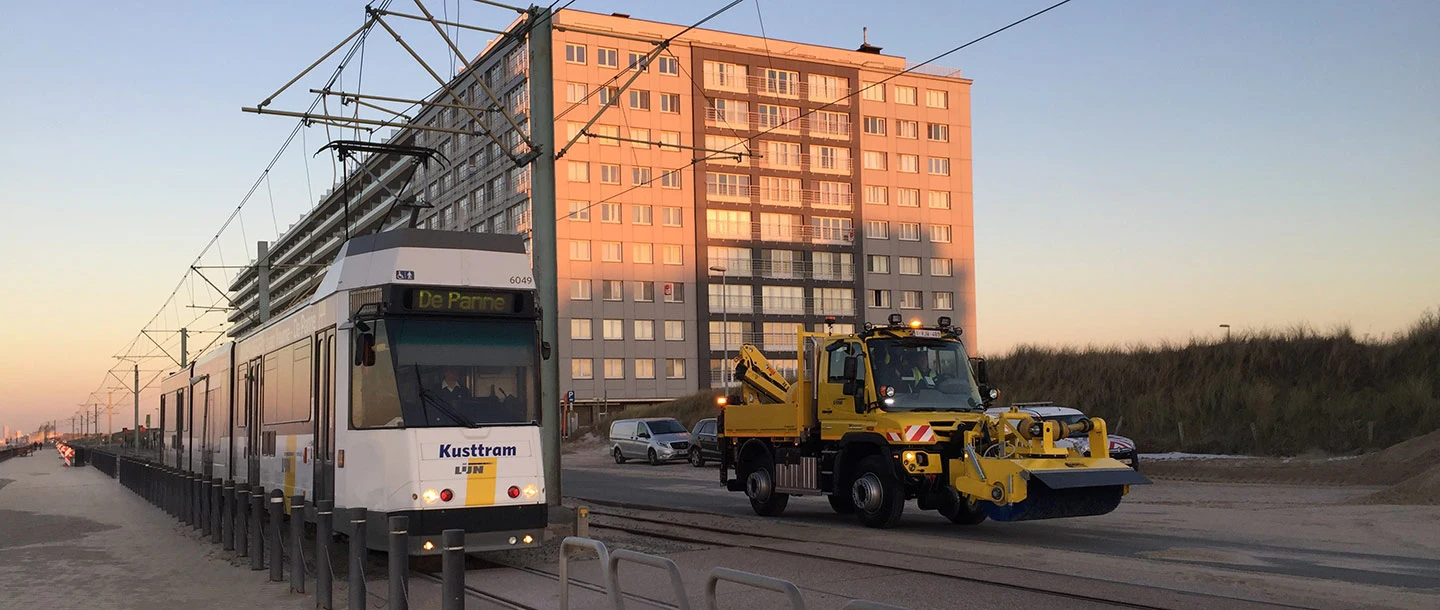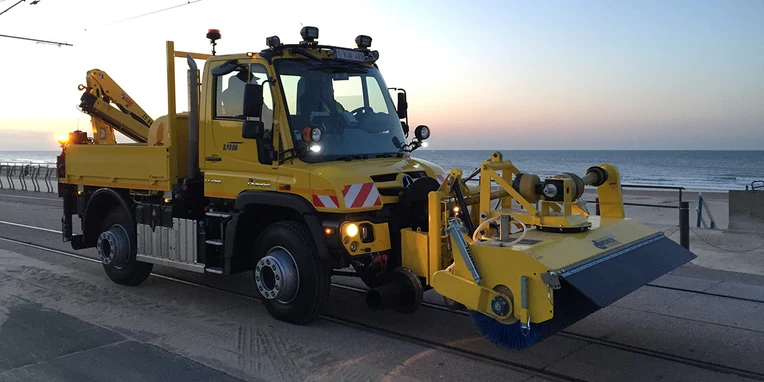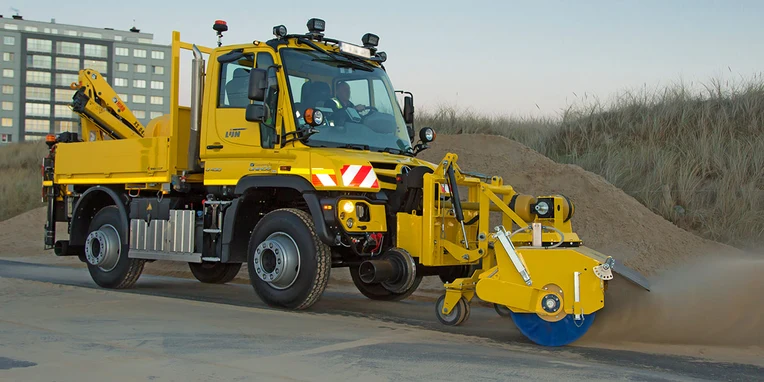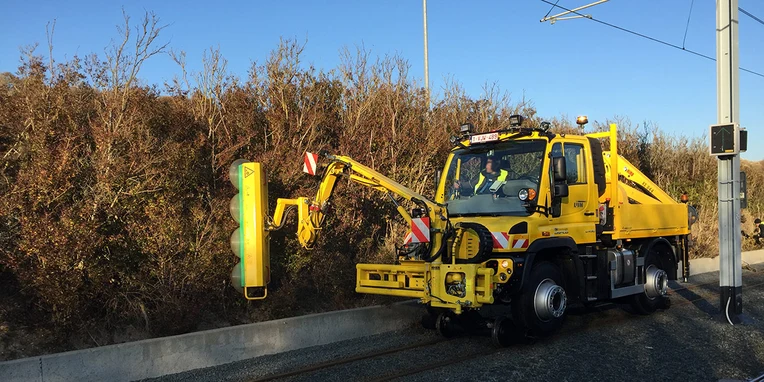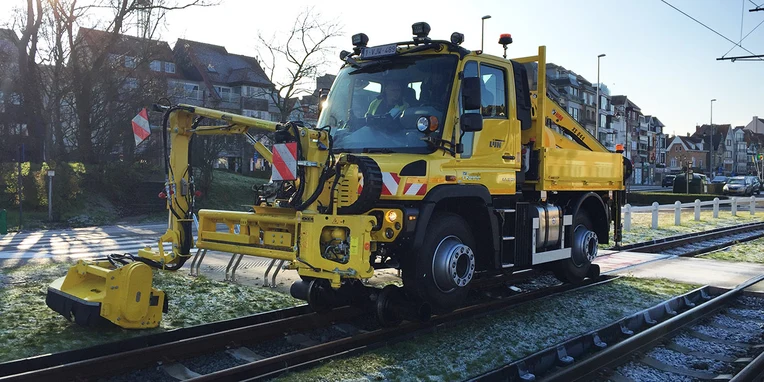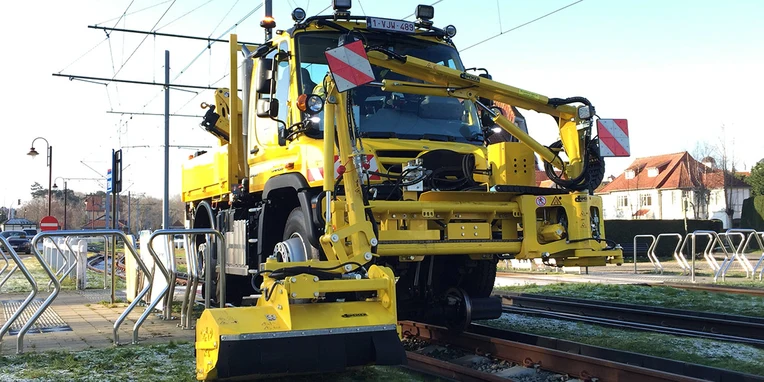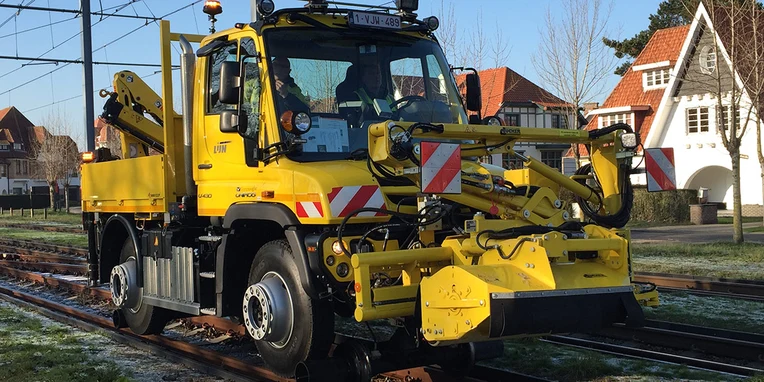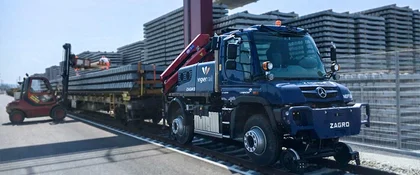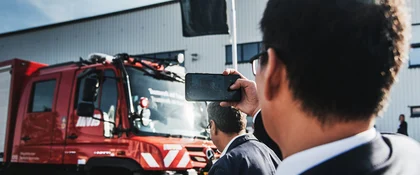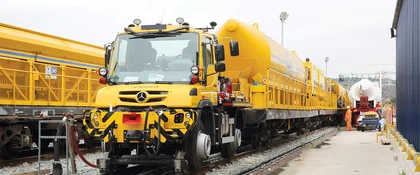World premiere: road-rail Unimog U 430 with 1,000 mm track width in Belgium.
A very special vehicle concept is currently celebrating its première on the railway network of "De Lijn", a Belgian local public transport company: a road-rail Unimog U 430 with a friction gear drive manufactured by Zagro for a railway track width of 1000 mm.
This new vehicle's area of operation includes the "coastal tram" along the Belgian North Sea coast. Stretching along 65 km between De Panne in the west and Knokke in the east, it is the longest single tramline in the world. And it is also probably one of the most extraordinary; the "Kusttram" gives its customer a view out to sea as it takes them to the loveliest bathing resorts along the Flemish coast.
Friction gear drive for a track width of 1,000 mm.
Thanks to the compact dimensions of its axles, the Unimog has the correct track width ex works to drive on its own wheels on the standard-gauge rail track width (1,435 mm) or different international wide-gauge tracks (e.g. 1,520 mm). However, it is not possible for the Unimog to drive on its own wheels on rail tracks with a gauge width of 1,000 mm.
For this reason Zagro has developed a drive gear for the latest generation of Unimog vehicles with which the Unimog vehicle's wheels run on an extension of the rail axle, the so-called "friction drums". This type of drive also shows off the chassis characteristics of the Unimog. Thanks to permanent all-wheel drive, all four wheels provide the Unimog with traction. Whilst driving on the rails, this is assisted by locking the longitudinal differential as well as the differential locks of the front and rear axles.
Another special feature on the Unimog is shown to advantage too: the design of the friction gear drive means that the Unimog must drive in reverse gear in order to move forwards on the rails. Fortunately, the Unimog for road-rail operations has up to 8 reverse gears and can thus achieve speeds of up to 50 km/h in both directions with a friction gear drive. When changing from the rails to the road, as with standard rail gear systems, the rail axles swing upwards with the aid of the Unimog's hydraulics system before the Special Truck can then continue driving on the road to the next job or back to the depot.
